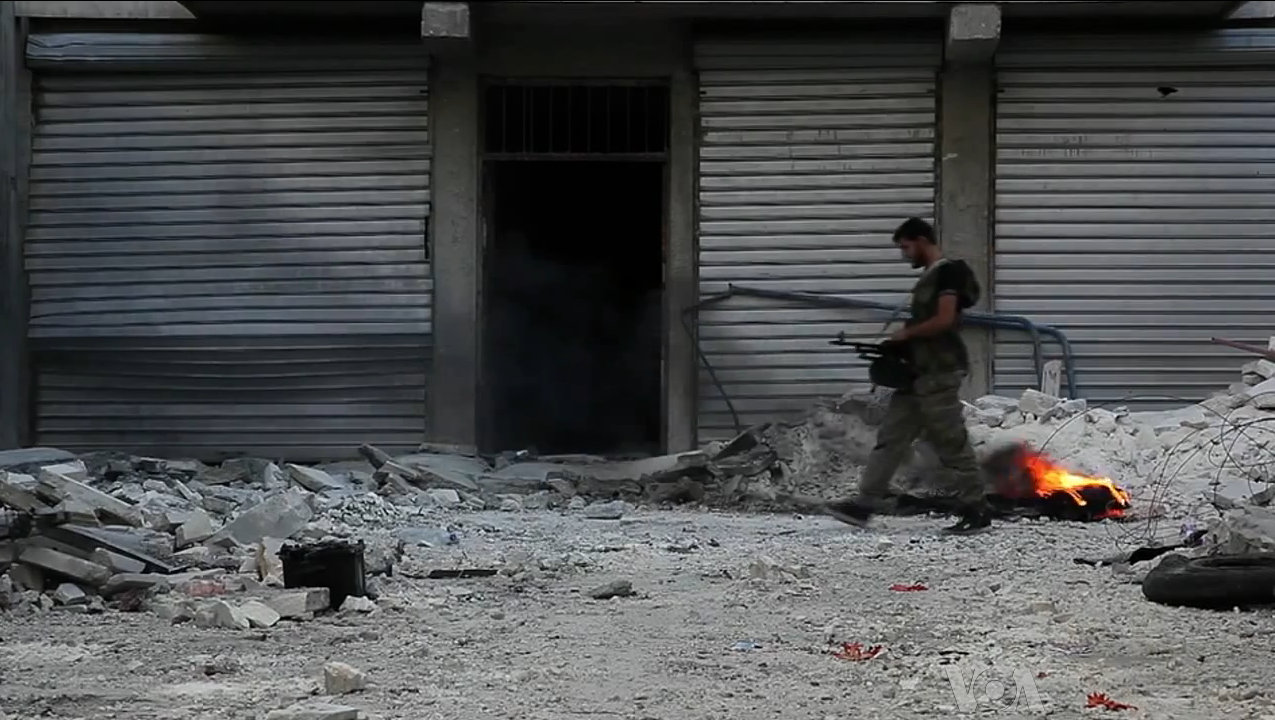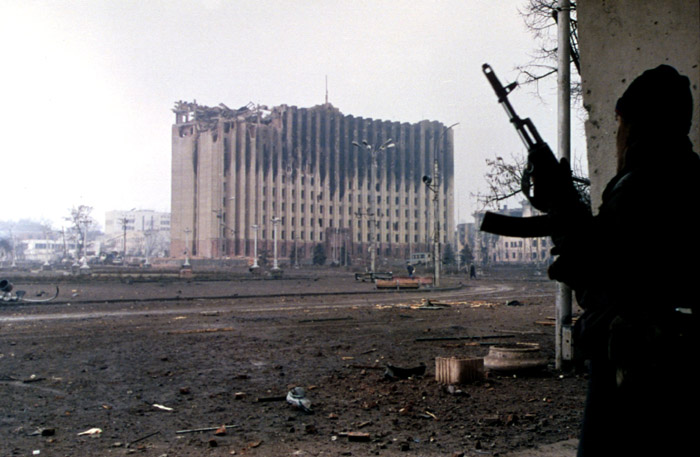The Loss of Afghanistan
A review of Amin Saikal, “How to Lose a War: The Story of America’s Intervention in Afghanistan” (Yale University Press, 2024).

Published by The Lawfare Institute
in Cooperation With

Forty-three years before Afghan President Ashraf Ghani fled Kabul ahead of the advancing Taliban in 2021, he took refuge abroad from another, similarly ruthless, Afghan regime.
On Nov. 26, 1978, Afghan police serving the country’s Soviet-aligned government detained Louis and Nancy Dupree—a couple widely regarded as the pillars of the American community in Kabul. On Dec. 1, after several days of interrogation by police commandant Sayed Daoud Tarun, they were ejected from Afghanistan at the Torkham border crossing with Pakistan. Tarun warned Dupree never to return. Deprived of their Land Rover by the authorities on a technicality, the Duprees walked into Pakistan. Once in Peshawar, Louis immediately implored local U.S. diplomats to phone Ghani, then a graduate student at Columbia University, advising him not to return to his homeland.
Many would place the earliest meaningful American encounter with Afghanistan in the late Cold War, or the immediate wake of 9/11. The experiences of Ghani, the Duprees, and countless others argue otherwise. Historians who have studied Afghanistan and its earlier relationship with the United States have much to contribute to an increasingly bustling literature on Washington’s 20-year war against the Taliban.
In that light, a new account of that war by Amin Saikal is especially welcome. Saikal has written perhaps the best study of recent Afghan history, “Modern Afghanistan: A History of Struggle and Survival.” He is especially able to situate the events of 2001-2021 against a far richer backdrop. Emerging from “How to Lose a War” is a searing indictment of U.S. state-building efforts in Afghanistan—of repeated mistakes made in both Washington and Kabul.
“How to Lose a War” is a notably short book, and Saikal focuses his analysis on the flawed and rushed process by which the United States established an allied regime in Kabul, followed by sharply critical chapters on the presidencies of Hamid Karzai and Ghani. Two subsequent chapters deal concisely with efforts at civil reconstruction and the flagging U.S. military effort. These complement, but do not displace, the author’s overriding emphasis on failed state creation.
What went wrong amid a seemingly overwhelming victory in autumn 2001? The U.S. failure to detain or kill al-Qaeda leader Osama bin Laden undermined initial notions of the U.S. mission. By the account of Gen. Karl Eikenberry, whom Saikal credits specially in the preface, it afflicted the operation with a severe case of mission creep. Bin Laden’s escape from Tora Bora stemmed from the Bush administration’s determination to wage the war with a light footprint. This failure led the White House to commit abruptly and with little forethought to a longer-term struggle for Afghanistan.
Thus, Saikal suggests that one is best advised to examine initial mistakes, beginning with the December 2001 Bonn agreement. In Bonn, representatives of four anti-Taliban groups, overseen by an array of international observers, hurriedly established an ad hoc Afghan government. The United States favored the elevation of Hamid Karzai as Afghanistan’s interim leader. Its representative, Afghan émigré Zalmay Khalilzad, played a pivotal role in Bonn and afterward, as Washington raced to fill the vacuum left by the Taliban. One can argue that this vacuum imposed a certain urgency, but Saikal finds much that was “rushed and overly ambitious” about the Bonn timetable.
The book’s most intriguing counterfactual argument emerges during and after Bonn: the failure of the United States to enlist the ousted Afghan king, Mohammad Zahir Shah. Deposed by his cousin in 1973 and afterward a resident of Italy, Zahir was widely associated with Afghanistan’s fondly recalled prewar era. Washington evidently dabbled with the idea. Richard Haass, who headed the State Department’s Policy Planning Staff, met with Zahir at his villa in October 2001. He wrote disparagingly afterward about their conversation (“an hour that seemed much longer”), concluding that the king could not be relied upon. Nearly 87 at the time, Zahir had not outlived his contemporaries by volunteering opinions to strangers. Even in his heyday, he had been notably reticent. Nonetheless, no Afghan figure could match him as a source of legitimacy for a new state, especially among the majority Pashtun population. The Taliban evidently thought so, and sharply warned Zahir against returning to Afghanistan. Washington, including its Bonn representative, Khalilzad, had different notions of constructing legitimate rule in Afghanistan and threw their weight behind Karzai. Thus, Saikal observes, “a momentous opportunity was lost.”
Drafted in peaceful times, the 1964 constitution might have provided some basis for a post-Taliban state. In its brief heyday (1964-1973), it had been undermined by Zahir, who feared that the system might elevate a popular alternative to the royal family. Bonn and the subsequent deliberations gave rise, however, to a presidential system: a choice without any positive precedents in Afghan history. For this, we can credit the later intervention of a constitutional commission packed with Karzai loyalists, who favored centralized authority, overruling objections by regional leaders. As Saikal observes, the presidential system risked the emergence of an authoritarian executive branch, able to circumvent the legislature and courts. The winner-take-all nature of the presidential system, moreover, sharpened the contest for power in Kabul, leading to several acrimonious elections.
The effort to emulate the 1964 constitution may seem quixotic, but Saikal’s extensive second chapter, which charts Afghan history from independence until 2001, explains the powerful nostalgia for the country’s last sustained peaceful era. Cold War-era Afghanistan found an improbable stable nonaligned orbit between the superpowers. Domestically, Zahir reigned at the national level, but he exercised his power lightly outside of the capital. This made eminent sense. His father, Nadir Shah, had been assassinated in 1933. Nadir Shah, in turn, had restored his family’s grip on the throne after the ambitious reform program of King Amanullah (1919-1929) sparked a provincial revolt and his overthrow.
In gesturing back to the 1964 constitution, Americans and Afghans passed over the best attributes of the system while retaining the worst. Zahir’s reluctance to delegate power in the earlier period had ultimately undermined his legitimacy while rendering the parliament a noisy accoutrement. His refusal to legalize political parties as institutions prevented the legislature from functioning productively. Four decades later, Karzai emulated the monarch, adopting a seldom-used voting system that undermined parties, ensuring that the new Afghan legislature would be as fragmented and incoherent as its 1960s antecedent.
As might be expected, Karzai fares poorly in this accounting. His elevation hinged considerably on U.S. esteem and a close bond with Khalilzad, who was present in Afghanistan from 2001 into 2005. His ambitions were checked somewhat by the tenuous nature of his office, but election in his own right in 2004 bolstered his confidence and willingness to act extralegally. In a strange parallel to Ngo Dinh Diem, the longtime U.S. client in South Vietnam, Karzai’s brothers were accused of engaging in a variety of corrupt practices. The presidential system abetted chauvinist tendencies. The election of Barack Obama to the U.S. presidency led Karzai into greater conflict with his superpower patron. U.S. officials found him increasingly erratic and critical of their military presence within Afghanistan (again arousing uncomfortable comparisons to Diem). The Taliban had rebounded alarmingly, yet the Afghan president began calling the insurgents “brothers,” while criticizing the conduct of U.S. troops.
Nor does Ghani emerge positively. A bitterly contested 2014 election pitted the technocratic Ghani—at that point the favorite of U.S. officials to succeed the unreliable Karzai—against Abdullah Abdullah. The latter candidate had been a deputy to Ahmed Shah Massoud, the famous anti-Taliban mujahideen commander slain by al-Qaeda on Sept. 9, 2001. Saikal’s sympathies lie at least partly with Abdullah, whom the author’s brother Mahmoud advised. Alongside the uncompromising, maladroit Ghani, Abdullah is depicted as a somewhat better politician—although prone to vacillation and servility.
Aided by his brother, apparently an avid notetaker, Saikal is able to offer a close perspective of the contested 2014 election and the intervention of the U.S. government, from the perspective of Abdullah’s camp. Abdullah challenged the results from the June 14, 2014, runoff election. After trailing in the first round, Ghani had somehow vaulted past Abdullah: The former gained a remarkable 24 percent from the previous tally, while the latter’s percentage remained oddly static. Secretary of State John Kerry repeatedly implored Abdullah to compromise, at one point citing his own narrow loss to Bush in the 2004 election. Abdullah eventually accepted a nebulous office within a jerry-rigged dual government. As Saikal notes, this was another rushed improvisation without meaningful local precedent. War-torn Afghanistan was an unlikely proving ground for a duumvirate.
Subsequent chapters concisely examine parallel efforts to reconstruct Afghan civil society and the U.S. war effort. Saikal’s evaluation of civil reconstruction efforts is quite brief but at least touches on anti-narcotics policy, the promotion of women’s rights, and unsuccessful efforts to promote durable economic growth. That last failure conceivably goes a long way toward explaining the subsequent collapse.
While Saikal clearly set out to write a book distinct from Carter Malkasian’s exhaustive study of the U.S. military effort, his brief consideration of it documents a clear lack of long-term strategy. Whereas Secretary of State Colin Powell initially forswore making Afghanistan the focus of a new Marshall Plan, Bush subsequently made that pledge—at Gen. Marshall’s alma mater, no less. The U.S. military command within Afghanistan was subject to considerable churn, while the war effort in Iraq depleted available resources from 2002 onward. “Profound and excessive” strategic errors foredoomed the U.S. effort, in his analysis. In this vein, more could be said about the malign inattention of Secretary of Defense Donald Rumsfeld.
In an otherwise thorough indictment, one sizable charge remains unfiled. Saikal alludes at times to the civilian death toll of the U.S. war, worsened by the U.S. military’s reliance on firepower. Karzai, himself, was nearly killed by a bomb dropped from a B-52 in December 2001. Two dozen of his soldiers were not so fortunate. Recent reporting by the New York Times from the remote province of Nuristan highlights the extent to which haphazard bombing turned allies into adversaries, bolstering the Taliban’s presence in a region far outside of its historic base. The deaths of civilians and allied military forces steadily undermined the legitimacy of the Kabul government, rendering Karzai and Ghani the apparent pawns of a foreign aggressor.
The resulting backlash might help explain the surprising strength of the Taliban outside of predominantly Pashtun areas and the rapidity of the Afghan collapse in 2021. So, too, would the profound weariness of the Afghan population after four decades of unremitting warfare. The ordeal of modern Afghanistan has few if any modern parallels.
Having promised so much at the inception of its own Afghan campaign, the United States bears its own scars from two decades of campaigning and the war’s tragic denouement. While inflation represented the top concern in exit polls, the Trump campaign squandered few opportunities to remind voters of the chaotic withdrawal from Kabul. Americans may not, by 2021, have wanted to wage this war, but they were also unprepared for the consequences of abandoning it.
Bush and his successors paid little heed to Afghan history when they committed to and perpetuated an ambitious campaign against al-Qaeda and its Taliban allies. Saikal’s book highlights myriad ways by which they erred. One can see, by its closing pages, how the war in Afghanistan was lost. Yet the sum of Saikal’s indictment will lead most readers to wonder if any other outcome was possible.




.jpg?sfvrsn=d5e57b75_5)
